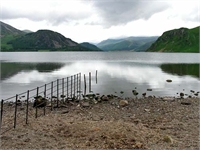
Conserving Our Water Supply
Important Notice: Our web hosting provider recently started charging us for additional visits, which was unexpected. In response, we're seeking donations. Depending on the situation, we may explore different monetization options for our Community and Expert Contributors. It's crucial to provide more returns for their expertise and offer more Expert Validated Answers or AI Validated Answers. Learn more about our hosting issue here.

Conserving Our Water Supply
You must be logged in to post a comment.
These days water has become a hot topic. It is necessary for the survival of all living things and so easy to obtain. Turn on any faucet and a steady stream will begin to flow, making it’s usage an afterthought. However news agencies have been reporting for years about an impending water shortage and recently the news has gotten worse.
World Wide Water Shortages
For years the U.S. has been hit with reports about water shortages in other countries, and while we might worry for a moment, it is easy to let it slip your mind. Until it hits home. "One-third of U.S. counties are facing a high risk that future water demand will outstrip supplies," writes Carey Gillam in the July 20, 2010, Reuters article "Water Crisis Seen Big Threat to U.S. West and South." And if that doesn’t have an impact, consider this: If water useage is not conserved, there is a 50 percent chance Lake Mead, the water supply for over 25 million people, will be dry by 2021. Now those are numbers that might make us take notice.
What Can We Do To Help?
Conserving daily water usage is the first step to combating this problem. Implementing all or even some of these steps will help not only the environment, but will help you see a difference in your water bill.